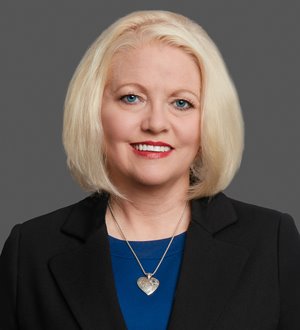All areas of the country rely in part on foreign medical graduate (FMG) physicians, who may be required to serve in qualifying health professional shortage areas (HPSAs) or medically underserved areas (MUAs) to transition to a career as a health professional in the United States. These FMG physicians are often admitted to the U.S. to engage in their medical graduate studies in J-1 nonimmigrant status and are subject to a requirement to return to their home country for two years before transitioning to a pathway to legal permanent residence (LPR) in U.S. (Some refer to his process as obtaining a “green card”)
For those J-1 FMG physicians who wish to transition to a pathway to LPR, they must determine if they can be approved for a waiver of this two-year obligation to return to their home country in order to provide critical medical care in underserved areas of the U.S. This process is referred to as obtaining a J-1 waiver of section 212(e) of the Immigration and Nationality Act, as amended (INA). Dr. Ehrenfeld included in his address a recommendation to create smoother pathways for foreign-trained physicians.
In the past, one of the smoother pathways created was through federal legislation establishing the State Conrad 30 program, which allows each state to grant up to 30 waivers of section 212(e) annually to qualifying physicians. The Conrad 30 program requires the sponsored physician to provide at least three years of service in a qualifying HPSA or MUA. The Conrad 30 program was established in 1994 by the Immigration and Nationality Technical Corrections Act and is named after its sponsor, Senator Kent Conrad of North Dakota. The program, as originally implemented, was limited to 20 slots per state. From 2001 to 2020, the Conrad program recruited 18,504 physicians. In 2020, 34% of Conrad physicians served rural areas.[1] The Conrad State 30 and Physician Access Reauthorization Act (H.R. 4942) and the Senate companion bill (S. 665) were introduced in 2023 to reauthorize the program for three years and to expand the number of slots available (five), depending on nationwide waiver usage in the prior year. At present, the program has not even been reauthorized.
States have also been able to create other pathways to support J-1 waivers for physicians via the creation and funding of a variety of federal regional commissions, which qualify as interested government agencies (IGAs) to sponsor such waivers.[2] Most IGA waivers are based on commitments to work for three years, like the Conrad program waivers, in underserved communities or facilities. The IGA regional commissions provide critical support to underserved areas to recruit and place FMGs subject to the J-1 two-year residency requirement. Each IGA has its own application process, requirements, and timelines. Currently, as for state-based commissions sponsoring physician J-1 waivers, there are the following:
- the Appalachian Regional Commission (ARC)[3],
- the Delta Regional Authority (DRA)[4],
- the Southeast Crescent Regional Commission (SCRC), which commenced accepting applications in 2022[5], and
- the Northern Border Regional Commission (NBRC), which began accepting applications in December of 2023[6].
The Northern Border Regional Commission (NBRC) began to accept applications for J-1 waivers for physicians agreeing to serve for three years in some regions of Maine, New Hampshire, New York, and Vermont. NBRC works with the applicable states they cover to complement the existing Conrad programs by accepting an “unlimited number” of applications for waivers from physicians on a rolling basis. They accept J-1 waiver applications from physicians, who will practice primary medical care (i.e., general or family practice, general internal medicine, pediatrics, or obstetrics and gynecology), in a designated primary care HPSA or designated MUA or psychiatric care in a designated Mental Health Professional Shortage Area (MHPSA). NBRC notes that it plans to expand the program to include some specialty care applications in the second phase of the program’s operation.
The ARC was established in 1965 in response to the economic distress existing in the Appalachian region.[7] The ARC includes 423 counties in Alabama, Georgia, Kentucky, Maryland, Mississippi, New York, North Carolina, Ohio, Pennsylvania, South Carolina, Tennessee, Virginia, and West Virginia. The ARC program prefers primary care providers.
The DRA was established in 2000 to address the economic distress of the Mississippi River Delta region, which includes 252 counties and parishes in Alabama, Arkansas, Illinois, Kentucky, Louisiana, Mississippi, Missouri, and Tennessee.[8] The DRA accepts waivers for primary medical care physicians (e.g., general or family practice, general internal medicine, pediatrics, obstetrics/gynecology, and psychiatry) and specialists with proof of need.
The SCRC was created via the 2008 farm bill, which also made the NBRC and the Southwest Border Regional Commission (SBRC).[9] On December 8, 2021, the U.S. Senate confirmed the first federal co-chairperson for the SCRC, which allowed it to convene and commence activities. In 2022, the SCRC began accepting J-1 waiver applications for services in 428 counties located in Alabama, Florida, Georgia, Mississippi, North Carolina, South Carolina, and Virginia.
The overlap of multiple opportunities to place FMG physicians needing J-1 waivers is evident for Alabama and Mississippi by the jurisdictional scope of the above-referenced commissions. What about the SBRC?[10] For that matter, what about the Great Lakes Authority (GLA) created in 2023[11], which was modeled after the NBRC, SCRC, and SBRC?[12] Juan Eduardo Sanchez was nominated in December of 2022 as the first federal co-chairperson of the SBRC, while the GLA is not operational. The SBRC has been short on federal funding. Congress appropriated $5 million for the SBRC through the 2023 Consolidated Appropriations Act (P.L. 117-328).
The moral of this story is that states can be in the driver’s seat (at least on the passenger side) to create new opportunities to attract scarce physician services to areas of highly underserved medical needs by supporting the creation, operation, and funding of IGAs. Other IGAs existed, such as the Northern Great Plains Regional Authority (NGPRA), which was created in 2002 but was only active for a short period of time until the end of the fiscal year 2018 when it was not reauthorized. The NGPRA was created to address economic distress in Iowa, Minnesota, Missouri (excluding counties included in the DRA), North Dakota, Nebraska, and South Dakota. The Denali Commission, which only covers the state of Maine, was created in 1998, but its activities do not include J-1 physician waivers. In such a critical era of physician shortages, states should become more active in investigating IGA opportunities.
















